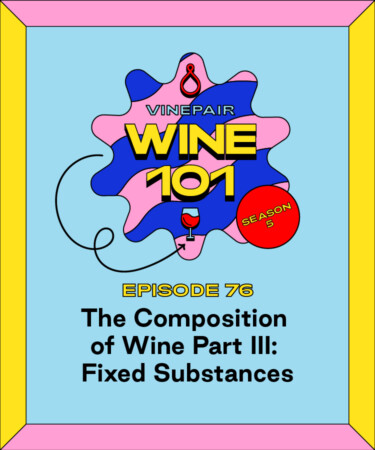As we continue to figuratively swim around inside a bottle of wine, we move on from discussing dissolved gasses and volatile substances to take a look at another set of components: fixed substances. These are pure substances that have a definite and unchanging composition. They don’t evaporate. They’re not volatile. We’re talking about residual sugars, glycerol, and phenolics.
Residual sugar is the sugar in wine that does not or cannot be converted into alcohol by yeast. Glycerol, or glycerine, isn’t sugar, but it does contribute to perceived sweetness in wine as well as its viscosity. And phenolics are a broad collection of compounds that contain aromatic rings and hydroxyl groups, including phenols, flavinoids, tannins, anthocyanins, and several other compounds. They live in every part of grapes, from seeds to stems, and they contribute to a wine’s flavor, help wine age gracefully, and allow it to retain its color.
But these descriptions are just fixed substances in a nutshell. On this episode of “Wine 101,” we crack that nut and give an in-depth explanation of residual sugars, glycerol, phenolics, and the role all three play in wine. Tune in for more.
Listen Online
Follow Keith on Instagram @VinePairKeith. Rate and review this podcast wherever you get your podcasts. It really helps get the word out there.
“Wine 101” was produced, recorded, and edited by yours truly, Keith Beavers, at the VinePair headquarters in New York City. I want to give a big old shout-out to co-founders Adam Teeter and Josh Malin for creating VinePair. Big shout-out to Danielle Grinberg, the art director of VinePair, for creating the most awesome logo for this podcast. Also, Darby Cicci for the theme song. And I want to thank the entire VinePair staff for helping me learn something new every day. See you next week.
*Image retrieved from auremar via stock.adobe.com
